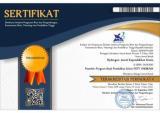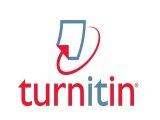PEMBELAJARAN INKUIRI TERBIMBING BERBANTUAN SIMULASI KOMPUTER TERHADAP HASIL BELAJAR MATERI KESETIMBANGAN KIMIA
DOI:
https://doi.org/10.33394/hjkk.v5i2.1592Keywords:
Guided Inquiry, Computer Simulation, Learning OutcomesAbstract
students of IKIP Kimia Mataram Chemistry study program that follow the
Basic Chemistry 2 course in the even semester of academic year 2013/2014
with 2 homogenously distributed classes. The sample was taken by cluster
random sampling technique. One class consists of 21 students who were
taught inquiry led by using computer simulation and other class consists of 22
students with guided Inquiry. The research data are low learning result and
high level learning result on chemical equilibrium material measured by using
test instrument choice and essay test with content validation each 80,6% and
91,7%. The measurement of the reliability of questions was obtained from
Cronbach's Alpha formula with a value of 0.73 for multiple choice tests and
0.914 for the essay test. Data analysis using ANOVA Two Ways test. The
result of the research shows that: (1) Low learning result of under guided
class students in using computer simulation is higher than guided inquiry
class without computer simulation; (2) Higher student learning result in
guided inquiry class using computer simulation higher than guided inquiry
class without computer simulation. So it can be concluded that guided inquiry
learning using computer learning can student improve learning outcomes in
chemical equilibrium material.
References
Abdullah, S., & Shariff, A. 2008. The Effects of Inquiry-Based Computer Simulation With
Cooperative Learning on Scientific Thinking Conceptual Understanding of Gas Laws.
Eurasia Journal of Mathematics, Science and Technology Education, 4(4):387-398.
Bergquist, W., & Heikkinen, H. 1990. Student Ideas Regarding Chemical Equilibrium: What
Written Test Answers Do Not Reveal. Journal of Chemical Education, 67 (1000).
Chandrasegaran, A.L., Treagust, D.F & Mocerino, M. 2007. The Development of two-tier
multiple-choice diagnostic instrumen for evaluating secondary school students’ ability
to describe and explain chemical reactions using multiple levels of representation.
Chemistry Education Research and Practise, 8 (3):293-307.
Driel, J.H., & Graber, W. 2002.â€The Teaching and Learningof Chemical
Equilibriumâ€.Chemical Education: Towards Research-based Practice, 271−292.
Effendy. 2002. Upaya untuk Mengurangi Kesalahan Konsep dalam Pengajaran Kimia dengan
Menggunakan Strategi Konflik Kognitif. Media Komunikasi Kimia, 2(6):1-20.
Gil, V. M. S., & Paiva, J. C. M. 2006. Using Computer Simulations To Teach Salt Solubility.
The Role of Entropy in Solubility Equilibrium, J. Chem. Educ. 83, 170–172.
Harrison, A. G., & Treagust, D. F. 2002. The Particulate Nature of Matter: Challenges in
Understanding the Submicroscopic World. In Gilbert, J.K et al (Eds), Chemical
Education: Towards Research-Based Practice. Dordrecht: Kluwer Academic
Publishers.
Jones, L. L. 1988. Enhancing Instruction in The Practice of Chemistry With The Computerassisted
Interactive Videodisc, Trends Anal. Chem. 7, 273–276.
Martin J. S. 2002. SIRs: Simulations and Interactive Resources for Windows, J. Chem. Educ.
, 639.
Nurrenbern, S. C., & Robinson, W. R. 1998. Conceptual Questions and Challenge Problems.
Journal of Chemical Education, 75(11):1502-1503.
Sawrey, B.A. 1990. Concept Learning versus Problem Solving: Revisited. Journal of
Chemical Education, 67(3): 253-254.
Sentongo, J., Kyakulaga, R., & Kibirige, I. 2013. The Effect of Using Computer Simulations
in Teaching Chemical Bonding: Experiences with Ugandan Learners. Int. J. Edu. Sci,
(4):433-441.
Steffen, L. K., & Holt P. L. 1993. Computer Simulations of Chemical Kinetics (CS). J.
Chem. Educ. 70, 991–992.
Stieff, M. 2011. Improving Representational Competence using Molecular Simulations
Embedded in Inquiry Activities. Journal of Research in Science Teaching, 48
(10):1137-1158
Treagust, D. F., Chittleborough, G., & Mamiala, T. L. 2003. The Role of Sub-Microscopic
and Symbolic Representations in Chemical Explanations. International Journal of
Science Education, 25(11):1353-1368.
Treagust, D. F., & Chandrasegaran, A.L. 2009. The Efficacy of An Alternative Instructional
Programme Designed to Enhance Secondary Students’ Competence In The Triplet
Relationship. In: Gilbert, J.K & Treagust, D. F (Eds). Multiple Representation in
Chemical Education: Model & Modeling in Science Education. Dordrecht: Springer.
pp:151-164
Tuan, H-L., Chin, C-C., Tsai, C-C., & Cheng, S-F. 2005. Investigating the Effectiveness of
Inquiry Instruction on The Motivation of Different Learning Styles Students.
International Journal of Science and Mathematics Education, 3:541-566
Tuysuz, M., Ekiz, B., Bektas, O., Uzuntiryaki, E., Tarkin, A., & Kutucu, E.S. 2011. Pre-
Service Chemistry Teachers’ Understanding of Phase Changes and Dissolution At
Macroscopic, Symbolic, and Microskopic Levels. Procedia Social and Behavioral
Sciences, Vol 15.152-455.
Weerawardhana, A., & Ferry, B. 2006. Use of Visualization Software to Support
Understanding of Chemical Equilibrium: The Importance of Appropriate Teaching
Strategies. Proceedings of the 23rd Annual Ascilite Conference: Who’s learning?
Whose technology? The University of Sydney.
Winberg, M. T., & Berg, C. A. R. 2007. Students’ Cognitive Focus During A Chemistry
Laboratory Exercise: Effects of A Computer-Simulated Prelab, J. Res. Sci. Teach.
(8):1108–1133.
Xie, D., & Tinker, R. 2006. Molecular Dynamics Simulations of Chemical Reactions for Use
in Education. Journal of Chemical Education. Vol. 83 (1):54311-7001.
Downloads
How to Cite
Issue
Section
Citation Check
License
License and Publishing Agreement
In submitting the manuscript to the journal, the authors certify that:
- They are authorized by their co-authors to enter into these arrangements.
- The work described has not been formally published before, except in the form of an abstract or as part of a published lecture, review, thesis, or overlay journal.
- That it is not under consideration for publication elsewhere,
- That its publication has been approved by all the author(s) and by the responsible authorities – tacitly or explicitly – of the institutes where the work has been carried out.
- They secure the right to reproduce any material that has already been published or copyrighted elsewhere.
- They agree to the following license and publishing agreement.
Copyright
Authors who publish with Hydrogen: Jurnal Kependidikan Kimia agree to the following terms:
- Authors retain copyright and grant the journal right of first publication with the work simultaneously licensed under a Creative Commons Attribution License (CC BY-SA 4.0) that allows others to share the work with an acknowledgment of the work's authorship and initial publication in this journal.Â
- Authors are able to enter into separate, additional contractual arrangements for the non-exclusive distribution of the journal's published version of the work (e.g., post it to an institutional repository or publish it in a book), with an acknowledgment of its initial publication in this journal.
- Authors are permitted and encouraged to post their work online (e.g., in institutional repositories or on their website) prior to and during the submission process, as it can lead to productive exchanges, as well as earlier and greater citation of published work.
Licensing for Data Publication
Hydrogen: Jurnal Kependidikan Kimia uses a variety of waivers and licenses, that are specifically designed for and appropriate for the treatment of data: Open Data Commons Attribution License, http://www.opendatacommons.org/licenses/by/1.0/ (default) Other data publishing licenses may be allowed as exceptions (subject to approval by the editor on a case-by-case basis) and should be justified with a written statement from the author, which will be published with the article.








